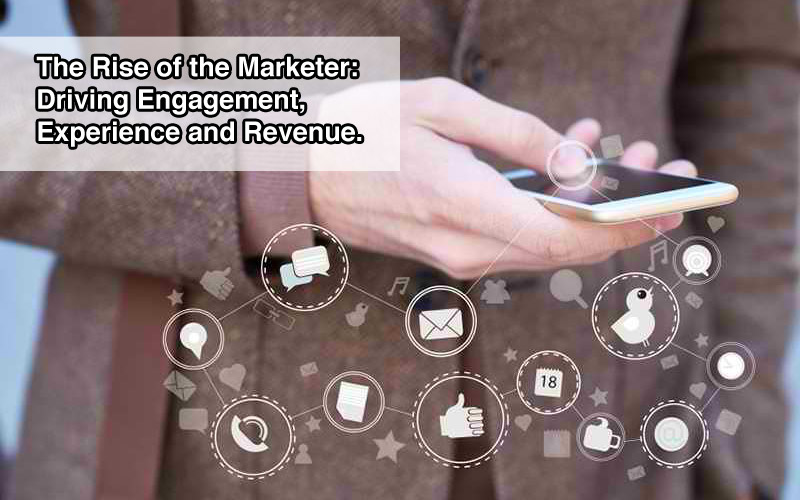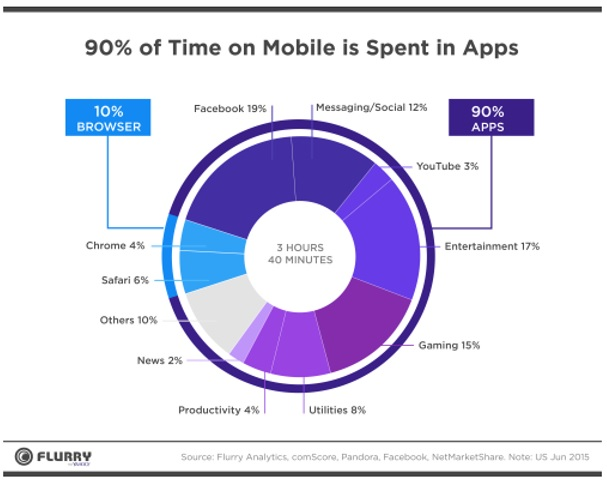Marketers Seize the Customer Experience
This article is drawn from an Economist Intelligence Unit report. The report was supported by a survey that included responses from 499 chief marketing officers and senior marketing executives worldwide
Eighty-six percent of CMOs and senior marketing executives believe they will own the end-to-end customer experience by 2020. The EIU explored this trend last year in The Rise of the Marketer: Driving Engagement, Experience and Revenue.
The top channels to the customer in 2020 will be social media (63% of respondents), the Internet (53%), mobile apps (47%) and mobile web (46%)
Future innovation will focus on small screens and no screens. Mobile devices (59%), personalization technologies (45%) are the two technology-specific trends that will have the biggest impact on marketing organizations by 2020.
Today, the primary task of CMOs is to deeply understand customer buying behavior and intent; deeply understand the context of where someone is in their decision journey; be able to predict what they’re most likely primed to do next; and be ready to influence them at the right moment. CMOs will reorganize their departments around data, and analytics, personalized customer experiences as a core strategy for creating and growing the value of brands.
The survey data suggest there is not a lot of time for CMOs to get things right. Survey respondents agree that marketing complexity has picked up speed and scale. When asked to compare which trends in the business environment will change marketing practice the most by 2020, respondents listed the accelerating pace of technology change, mobile lifestyles and the explosion of potential marketing channels as their top three choices. The specific technology trends that are driving those business environment changes by 2020 are mobile devices and networks, personalization technologies and the Internet of Things.
According to the CMO Council, personalization blends a deep understanding of a customer’s wants, needs and desires with timely and tailored delivery of relevant content, products and services.
However, when marketers are asked about the top three channels for customers in 2020, social media increases sharply for marketers, while the World Wide Web declines.
Customers typically show up at a brand’s front door—physical or virtual—already well educated about what a brand potentially offers them. This changes how a CMO positions marketing resources and assets. “You’re no longer marketing AT people,” says Ms Lemkau. “You’re influencing them in an environment where they’ve already had a chance to form a view.”
CMOs have become laser-focused on CX because it directly hits both the top and bottom lines of business. Moreover, nearly 90% of survey respondents believe marketing departments will exercise significant influence over business strategy by 2020, while nearly 80% say marketers will exercise the same influence over technology.
Elevating a personalized, efficient and consistent customer experience requires that CMOs integrate multiple departmental agendas under a single umbrella. Most CMOs readily admit that this is often a long, tough slog. But in the same breath, they acknowledge that better customer experience is the foundation for business performance.
By 2020, revenue impact remains the top metric, with every other measure playing a more or less equal role in a suite of measuring capabilities.
Chief Marketing Officers will own the customer experience.
The top channels to the customer in 2020 will be social media (63% of respondents), the Internet (53%), mobile apps (47%) and mobile web (46%)
Future innovation will focus on:
Today, the primary task of CMOs is to deeply understand customer buying behavior and intent; deeply understand the context of where someone is in their decision journey; be able to predict what they’re most likely primed to do next; and be ready to influence them at the right moment. CMOs will reorganize their departments around data, and analytics, personalized customer experiences as a core strategy for creating and growing the value of brands.
The survey data suggest there is not a lot of time for CMOs to get things right. Survey respondents agree that marketing complexity has picked up speed and scale. When asked to compare which trends in the business environment will change marketing practice the most by 2020, respondents listed the accelerating pace of technology change, mobile lifestyles and the explosion of potential marketing channels as their top three choices. The specific technology trends that are driving those business environment changes by 2020 are mobile devices and networks, personalization technologies and the Internet of Things.
According to the CMO Council, personalization blends a deep understanding of a customer’s wants, needs and desires with timely and tailored delivery of relevant content, products and services.
However, when marketers are asked about the top three channels for customers in 2020, social media increases sharply for marketers, while the World Wide Web declines.
By 2020, mobile apps and mobile web will overtake e-mail as a top channel to the customer.
This suggests that by 2020, more marketers expect they will interact directly with their customers through technology and personalization than interact indirectly with their customers through media and advertising.Customers typically show up at a brand’s front door—physical or virtual—already well educated about what a brand potentially offers them. This changes how a CMO positions marketing resources and assets. “You’re no longer marketing AT people,” says Ms Lemkau. “You’re influencing them in an environment where they’ve already had a chance to form a view.”
Elevating a personalized, efficient and consistent customer experience requires that CMOs integrate multiple departmental agendas under a single umbrella. Most CMOs readily admit that this is often a long, tough slog. But in the same breath, they acknowledge that better customer experience is the foundation for business performance.
By 2020, revenue impact remains the top metric, with every other measure playing a more or less equal role in a suite of measuring capabilities.



